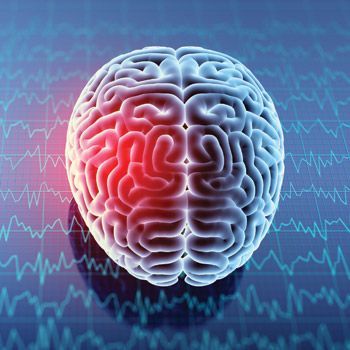Talking about migraines
Collecting good data is the first step in sorting through the many drugs and devices that are used to treat migraines.
There are numerous drugs and devices approved to treat migraines, but relief from headaches can often depend on the simplest of interventions: words.
“Communication is key,” Bert Vargas, MD, a neurologist, headache specialist, and associate professor at the University of Texas Southwestern in Dallas, told attendees at the annual meeting of the American Academy of Neurology, held in Philadelphia in May.

During a session on migraine prevention and treatment, he and Frank Andrasik, PhD, a clinical psychologist and chair and distinguished professor at the University of Memphis in Tennessee, offered advice on communicating about and combating headaches.
For starters, physicians need to collect good data. “You can spin your wheels for a very long time treating what looks to be migraine, but if it's not migraine—more importantly, if it's actually something secondary—you might not get the treatment response that you're looking for,” said Dr. Vargas.
Physicians should investigate patients' medications, comorbidities, and numbers of headache days and attacks. “It's important to actually differentiate headache attacks or headache days,” he added. Otherwise, a person might report pain lasting for multiple days as a single headache but not explain the duration.
Without detailed questioning, patients might also fail to mention days when their pain is a 2 or 3 on a 10-point severity scale, Dr. Vargas said. “They don't even include them [as headache days] anymore. It's really important to ask those questions,” he said.
One method to gather this information is a headache diary. “Even as simple as a calendar—you just tick off the box if you have a headache that day. If they feel the need to collect some additional information, like triggers or weather changes, that's great, but really what's important to me is associated features and headache days,” said Dr. Vargas.
The caveat is that a clinician really has to review the headache diary. “When you ask patients to do monitoring and to do these things, and then you never follow up on that … the message you send them, whether intended or not, is it's not important,” said Dr. Andrasik.
“No one likes to do homework and then not have it graded,” agreed Dr. Vargas.
Measurement tools, such as the Migraine Disability Assessment (MIDAS) questionnaire and Headache Impact Test-6 (HIT-6), can also be helpful, he noted, particularly to identify improvement over time. “People will come in and say, ‘You know what, I don't really think I'm any better,’ but then when you look at their MIDAS or their HIT-6, you can say ‘Well, you know what, it looks like you actually had a decrease in your severity, a decrease in the number of days,” Dr. Vargas said.
Both measuring improvement and communicating expectations are key to improving patient adherence, a common problem in migraine treatment, the experts said. “Even when you lay out the expectations that it can sometimes take weeks to months to really show some demonstrable effectiveness, there are still people that they really expect to see dramatic results in a week, despite the fact they've had 10 years of continuous pain,” said Dr. Vargas.
Medication—including how it's taken and working—should be a major topic of the physician-patient conversation, he noted. “I really can't emphasize enough trying to make sure medications are actually being used appropriately,” Dr. Vargas said. “I think we deem medication failures far too often, when really it's just a matter of adjustment and adjusting to the patient and sometimes maybe even some education.”
Patients should be encouraged to have patience with regard to side effects, as well as effectiveness. “Give it a try and if it doesn't mix well with you, we'll find something that does,” Dr. Vargas tells patients, especially those who arrive already having researched the risks of every medication option. For those who haven't, he does warn about possible effects “just so they don't worry when they occur—I can let them know it will go away with a little bit of time or adjustment.”
A psychologist may be able to help with communication about adherence, added Dr. Andrasik. “It's amazing how often I will find a patient is not taking a medication in the way my physician colleague prescribed it for them, and it's not because the physicians don't ask, it's just because everything is rushed,” he said. Given more time to talk with a therapist, a patient might reveal she is taking a medication intended as prophylaxis only as needed, for example.
The psychologist can, with the patient's permission, report that issue back to the treating physician, as well as work on strategies to improve adherence. “You don't want to make them feel guilty, you don't want to lecture them,” said Dr. Andrasik. He recommended saying something like “Everyone has problems doing that, so let's solve this, let's work collaboratively, let's see how we can make you become more adherent.” Setting specific goals, and in some cases creating a behavioral contract, can help, he added.
The decision to send a migraine patient to a psychologist might also require some explanation, though, according to Dr. Andrasik. “When many of you refer your patients to me, they somehow have this idea that it's made up and they say the headache is all in your head. And the first thing I say is, ‘Of course, it's in your head, it's a headache, where else would it be?’ So I spend a lot of time talking with them to make sure [they know] that I understand, I believe, I know it's real,” he said.
Another key component in education, both experts said, are the lifestyle factors that relate to migraines. “I definitely talk about sleep, or lack of sleep in many cases, sedentary lifestyle. Caffeine overuse is a big one,” said Dr. Vargas.
Counseling about lifestyle change should be more than just a lecture, he noted. “I actually try and set some parameters, really get a good feel for what someone is physically capable of doing and then giving them some short-term goals,” he said. “I know that a lot of my patients feel like I'm actually cutting off a limb if I remove their caffeine. But it can be a really important part of the treatment. … I'll say, ‘Just give me three months and let's see how you do, and then maybe we can sensibly incorporate some caffeine back into your diet.’”
Dr. Andrasik also mentioned stress, alcohol, missed meals, and dehydration as potential factors that he reviews with patients and explains how these triggers act differently depending on both the person and the circumstance. “I explain to them in simple terms that through the genetic bad luck of the draw, you have a system that's hyper-responsive, and so what I can get away with you maybe can't.”
This level of headache education should be possible to complete in a medical visit, but more in-depth approaches may be handled elsewhere. “When you get to some of the more specialized things that I and colleagues like myself do, like relaxation training, stress management, cognitive behavioral therapy, mindfulness training, biofeedback, you may or may not be able to do that in your office. You may be able to have someone join in your office to help you do that,” Dr. Andrasik said.
Although these interventions are generally not implemented by physicians, they have been studied by them. Dr. Andrasik described how physician organizations, including ACP, came together as the U.S. Headache Consortium in 2010 to grade nonpharmacologic options for preventing migraine. They found grade A evidence for relaxation, biofeedback, and cognitive behavioral therapy. The combination of behavior therapy and pharmacological therapy was given a B, but more definitive support has been published since, he said.
“Recently, we have a number of well-done, large-scale trials,” Dr. Andrasik said. “The pharmacological effects will emerge quicker. The behavioral treatments, because it's skill learning, it might take a little bit longer for those effects to emerge, but if you look over the long term, and if you look at six months, you see that's when they reach their peak.”
He reviewed some of the skills he teaches patients, including relaxed breathing. “It's amazing how many people when they're under stress or when they're working hard actually breath hold, don't breathe properly, breathe short, shallow, choppy breaths,” he said. “Think about how to teach your patients on how to just spend a few minutes a day focused on breathing.”
He also treats migraine patients with mindfulness, a concept that was invented centuries ago but has gained popularity in the U.S. in the last decade and represents a sort of reversal of typical therapy, he explained.
“When I was trained early on, we were taught to help a patient identify a problem and identify ways to directly tackle that problem and try to change the situation,” Dr. Andrasik said. “[Mindfulness] does not do that. It says that at some level, this is life, this is the hand you've been dealt, you've got to learn to accept it. … It's a whole different approach, and it suits some people; some people it does not suit.”




